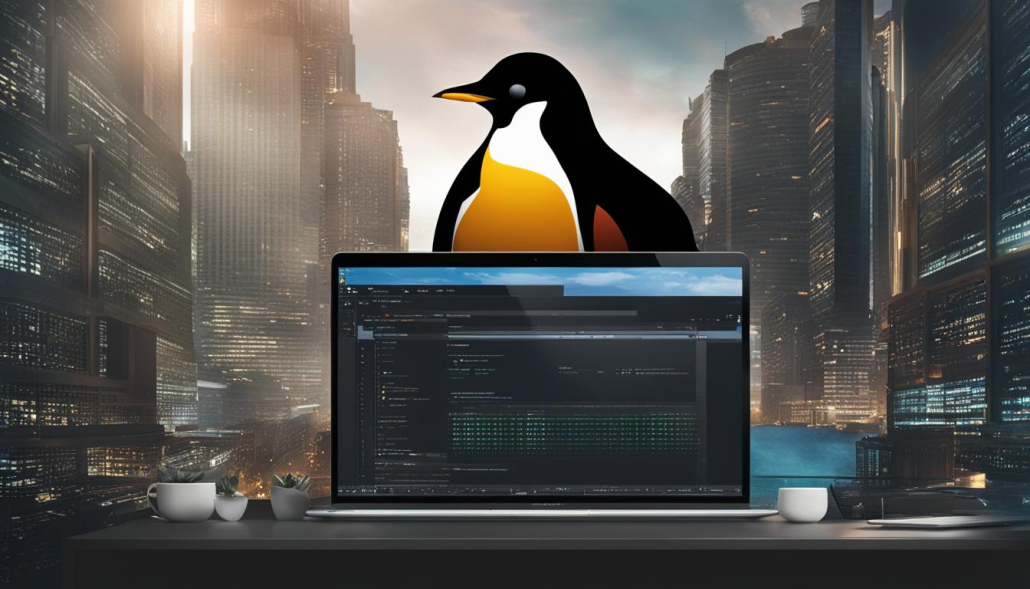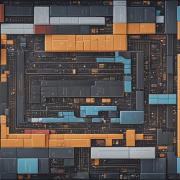AlmaLinux vs. Rocky Linux: A Comprehensive Comparison Guide
Rocky Linux and AlmaLinux are two open-source Linux distributions that emerged as viable alternatives to CentOS after its discontinuation by Red Hat. In this comprehensive comparison guide, we will explore the key differences between these operating systems and help you make an informed decision on which one to choose.
Both Rocky Linux and AlmaLinux are stable and bug-for-bug compatible with Red Hat Enterprise Linux (RHEL), ensuring reliable performance. However, there are notable distinctions that set them apart, such as project funding, security features, and community support.
Whether you’re looking for an Almalinux review, a Rocky Linux review, or simply comparing Linux distributions, this guide will provide you with the information you need to make the right choice for your needs.
Key Takeaways:
- AlmaLinux and Rocky Linux are open-source Linux distributions that serve as replacements for CentOS.
- Both operating systems are stable and bug-for-bug compatible with RHEL.
- Differences between the two include project funding, security features, and community support.
- Consider your specific requirements and preferences when choosing between AlmaLinux and Rocky Linux.
- Reviewing the features and support for each distribution can help you make an informed decision.
Introduction to AlmaLinux and Rocky Linux
AlmaLinux and Rocky Linux are two open-source Linux distributions that have emerged as popular alternatives to CentOS after its discontinuation by Red Hat. Both distributions are designed to be stable and bug-for-bug compatible with Red Hat Enterprise Linux (RHEL), making them suitable replacements for CentOS users.
Please accept YouTube cookies to play this video. By accepting you will be accessing content from YouTube, a service provided by an external third party.
If you accept this notice, your choice will be saved and the page will refresh.
AlmaLinux, created by CloudLinux, is a downstream fork of RHEL. It was initially known as Project Lenix before being named AlmaLinux. CloudLinux is one of the sponsors of AlmaLinux but not its owner. On the other hand, Rocky Linux is an enterprise-grade OS based on RHEL’s source code. It was released in 2021 and has been developed and supported by the community ever since.
Both AlmaLinux and Rocky Linux are community-driven projects that aim to provide a stable and compatible Linux distribution for users who relied on CentOS. While AlmaLinux is backed by a $1 million annual sponsorship, Rocky Linux secured $26 million in funding, highlighting the strong support and commitment behind these distributions.
Key Features of AlmaLinux and Rocky Linux
AlmaLinux and Rocky Linux share many key features as they are both identical forks of Red Hat Enterprise Linux (RHEL). Here are the main features that make them stand out:
1. 10-Year Lifecycle and Bug-for-Bug Compatibility
Both AlmaLinux and Rocky Linux offer a 10-year lifecycle, ensuring long-term support and stability for enterprise environments. They are bug-for-bug compatible with RHEL, meaning that applications developed and tested on RHEL can seamlessly run on both distributions without any compatibility issues.
2. Regular Updates
Both distributions provide regular updates to ensure the latest security patches, bug fixes, and feature enhancements. AlmaLinux and Rocky Linux aim to release updates within one business day of the upstream source releases, ensuring that users have access to the latest stable versions.
3. Project Funding and Sponsorship
While both distributions are community-driven, their project funding and sponsorship models differ. Rocky Linux has secured $26 million in funding, enabling them to invest in development, infrastructure, and community initiatives. On the other hand, AlmaLinux receives $1 million in annual sponsorship, allowing them to sustain the development and support of the distribution.
4. Security Features
AlmaLinux and Rocky Linux emphasize security and provide additional features to enhance system protection. AlmaLinux includes the CIS (Center for Internet Security) Benchmark, which offers a security configuration guide and vulnerability assessment tool. Rocky Linux incorporates the Network Time Security protocol for enhanced NTP (Network Time Protocol) security and supports Secure Boot for a secure booting process.
5. Community Support
Both distributions have active and growing communities that contribute to their development and provide support. The community support for AlmaLinux and Rocky Linux ensures that users can find help, resources, and engage with like-minded individuals for troubleshooting and sharing knowledge.
Overall, AlmaLinux and Rocky Linux are feature-rich alternatives to CentOS, offering stability, compatibility, and a robust ecosystem. The decision between the two will depend on factors such as project funding, specific security requirements, and community engagement. Consider your needs and preferences to make an informed choice between these reliable Linux distributions.
Architecture Support and Stability
One of the crucial factors to consider when deciding between AlmaLinux and Rocky Linux is the architecture support. Both operating systems offer support for multiple architectures, including x86_64, aarch64, ppc64le, and s390x. However, there are some differences in the timing of their architecture support.
AlmaLinux added support for the s390x architecture in its latest version and introduced support for aarch64 in version 8.4. On the other hand, Rocky Linux has supported aarch64 from the beginning but did not have support for ppc64le and s390x until version 9.0. This means that if your project requires specific architecture support, you may need to consider which OS provides the necessary compatibility.
In terms of stability, both AlmaLinux and Rocky Linux prioritize delivering a stable and reliable operating system. They incorporate tested and production-ready features to ensure a smooth system operation. Additionally, both distributions provide regular updates with a minimal lag, typically a day or less. This commitment to stability makes them suitable choices for enterprise applications and critical workloads.
Architecture Support:
| Architecture | AlmaLinux | Rocky Linux |
|---|---|---|
| x86_64 | ✓ | ✓ |
| aarch64 | Since v8.4 | ✓ |
| ppc64le | N/A | Since v9.0 |
| s390x | Since latest version | Since v9.0 |
In summary, both AlmaLinux and Rocky Linux offer robust architecture support and stability. The decision between the two will depend on your specific architectural requirements and preferences. Consider the supported architectures and evaluate which OS aligns best with your project needs.
Performance and Functionality
When it comes to performance and functionality, both AlmaLinux and Rocky Linux deliver exceptional results. As identical rebuilds of RHEL, these operating systems offer enterprise-grade performance that is both reliable and efficient. Whether you’re running applications in the cloud or on-premises, AlmaLinux and Rocky Linux provide the stability and robustness necessary for smooth system operation.
The latest versions of both distributions are based on upstream kernel version 5.14, which brings significant improvements in terms of security, performance, and functionality. This ensures that your system is up-to-date with the latest features and capabilities. With a focus on stability, AlmaLinux and Rocky Linux are designed to provide a consistent user experience, allowing you to run your business applications with confidence.
Both AlmaLinux and Rocky Linux have gained popularity in the enterprise space due to their ability to offer a viable alternative to RHEL. Their compatibility with RHEL means that you can seamlessly transition your existing applications to these distributions without sacrificing performance or functionality. Whether you need a reliable operating system for running mission-critical applications or want to take advantage of the extensive software ecosystem available on RHEL, AlmaLinux and Rocky Linux are excellent choices.
| Aspect | AlmaLinux | Rocky Linux |
|---|---|---|
| Performance | Enterprise-grade | Enterprise-grade |
| Functionality | Robust and extensive | Robust and extensive |
| Kernel Version | 5.14 (latest) | 5.14 (latest) |
| Compatibility | Full compatibility with RHEL | Full compatibility with RHEL |
As you can see from the table above, both AlmaLinux and Rocky Linux offer comparable performance and functionality. With their shared foundation in RHEL, you can expect a high level of compatibility and reliability. Ultimately, the choice between these two distributions will depend on your specific requirements and preferences. Consider factors such as project funding, security features, and community support to make the best decision for your organization.
App Compatibility and Community Support
When it comes to app compatibility, both AlmaLinux and Rocky Linux, as redistributions of Red Hat Enterprise Linux (RHEL), offer a high level of compatibility with enterprise applications. However, it is important to note that while many enterprise apps are built to run on RHEL, they may not be compatible with AlmaLinux and Rocky Linux without proper certification. Enterprises must provide certification for their apps to ensure compatibility with these distributions.
As for community support, both AlmaLinux and Rocky Linux benefit from a growing and active community of users and contributors. Both distributions are community-owned and governed, which means that decisions regarding the development and direction of the operating systems are made collectively. The community actively participates in the development process, providing feedback, reporting bugs, and contributing code. This vibrant and engaged community ensures that both AlmaLinux and Rocky Linux continue to evolve and improve over time.
In summary, while app compatibility may require certification, both AlmaLinux and Rocky Linux have strong and supportive communities behind them. These communities play a vital role in the ongoing development and success of the distributions, ensuring that users have access to the resources and support they need.
Table: Comparison of App Compatibility and Community Support
| AlmaLinux | Rocky Linux | |
|---|---|---|
| App Compatibility | Certification required for compatibility | Certification required for compatibility |
| Community Support | Active and growing community | Active and growing community |
Package Managers and Repositories
One of the key aspects to consider when comparing AlmaLinux and Rocky Linux is their package managers and repositories. These components play a crucial role in managing software installations and updates, ensuring a smooth and efficient user experience.
AlmaLinux utilizes the dnf package manager, which is a modern and user-friendly tool for managing packages. With dnf, users can easily install, remove, and update software packages from official repositories as well as custom-configured repositories. It provides a robust dependency resolution system, ensuring that all required packages are correctly installed and updated.
On the other hand, Rocky Linux offers flexibility in terms of package management. It supports both the rpm package manager, which is the default package manager in Red Hat-based distributions, and the dnf package manager. This allows users to choose their preferred package management method based on their familiarity and requirements.
| AlmaLinux | Rocky Linux | |
|---|---|---|
| Package Manager | dnf | rpm or dnf |
| Default Repositories | BaseOS, AppStream, Vault | BaseOS, AppStream, Community |
| Additional Repositories | Custom-configured | Community-approved |
Both AlmaLinux and Rocky Linux come with their respective default repositories for easy access to a wide range of software packages. AlmaLinux includes the BaseOS and AppStream repositories, providing essential packages and a vast collection of additional software. Additionally, AlmaLinux offers the Vault repository, which contains packages and ISO images for previous versions of the operating system.
Rocky Linux, on the other hand, features the BaseOS and AppStream repositories as well, but it also offers community-approved repositories that provide additional software packages. These repositories are maintained and supported by the growing community of users and developers, ensuring a diverse and up-to-date selection of software.
Whether you prefer the simplicity of dnf in AlmaLinux or the flexibility of both rpm and dnf in Rocky Linux, both distributions offer efficient package management and provide access to a wide range of software packages through their default and additional repositories.
Security Features
Ensuring robust security is a top priority for both AlmaLinux and Rocky Linux. These open-source operating systems come equipped with a range of security features that help protect your system and data.
AlmaLinux Security Features
AlmaLinux offers advanced security measures to safeguard your environment. One notable security feature is the inclusion of the CIS Benchmark, which provides guidelines and best practices for system configuration and security. This ensures that your AlmaLinux system is aligned with industry standards and well-protected against potential threats.
In addition, AlmaLinux incorporates the OpenSCAP tool, which allows you to perform vulnerability scanning and system configuration compliance checks. By leveraging OpenSCAP, you can identify potential security risks and take proactive measures to address them, enhancing the overall security posture of your system.
Rocky Linux Security Features
Rocky Linux also prioritizes security with its set of built-in features. One notable security enhancement is the implementation of the Network Time Security (NTS) protocol for the Network Time Protocol (NTP). This ensures the authenticity and integrity of time synchronization, mitigating potential attacks aimed at compromising the accuracy of system time.
Furthermore, Rocky Linux provides support for Secure Boot, a security mechanism that helps protect against unauthorized bootloader code from running during system startup. By enforcing the use of signed bootloaders and verified boot components, Secure Boot strengthens the system’s defense against boot-time attacks and unauthorized modifications.
Both AlmaLinux and Rocky Linux offer robust security features that contribute to a secure and protected system environment. The specific features provided by each distribution allow you to choose the one that aligns best with your organization’s security requirements and objectives.
Conclusion
When it comes to choosing between AlmaLinux and Rocky Linux as replacements for CentOS, both options offer stable and bug-for-bug compatible alternatives to Red Hat Enterprise Linux (RHEL).
Your decision should be based on factors such as project funding, security features, community support, and specific requirements.
If you are looking for an OS with high security standards and support for the CIS Benchmark, AlmaLinux might be the better choice for you. On the other hand, if you value NTP and Secure Boot support, Rocky Linux is worth considering.
Ultimately, the choice between AlmaLinux and Rocky Linux comes down to your individual needs and preferences. Take the time to evaluate these factors and choose the operating system that aligns best with your requirements.
FAQ
Are AlmaLinux and Rocky Linux identical distributions?
Yes, both AlmaLinux and Rocky Linux are identical forks of Red Hat Enterprise Linux (RHEL) with similar features and bug-for-bug compatibility.
How long is the lifecycle of AlmaLinux and Rocky Linux?
Both distributions offer a 10-year lifecycle, ensuring long-term support and stability.
What is the main difference in project funding between AlmaLinux and Rocky Linux?
Rocky Linux has secured $26 million in funding, while AlmaLinux receives $1 million in annual sponsorship.
What security features does AlmaLinux offer?
AlmaLinux provides high security with the CIS (Center for Internet Security) Benchmark, ensuring a robust and protected system environment.
What security features does Rocky Linux offer?
Rocky Linux incorporates the Network Time Security protocol (NTP) and Secure Boot support for enhanced system security.
Which architectures do AlmaLinux and Rocky Linux support?
Both distributions support x86_64, aarch64, ppc64le, and s390x architectures.
Is app compatibility guaranteed on AlmaLinux and Rocky Linux?
While many enterprise apps are built to run on RHEL, compatibility with AlmaLinux and Rocky Linux may require proper certification. However, more organizations are certifying their apps for use on both distributions.
What are the package managers used in AlmaLinux and Rocky Linux?
AlmaLinux uses the dnf package manager, while Rocky Linux uses the rpm or dnf package manager.
Are there additional repositories available for AlmaLinux and Rocky Linux?
Both distributions have main repositories installed by default, and additional repositories can be added. AlmaLinux also has a Vault repository with packages and ISO images for previous OS versions, while Rocky Linux has additional community-approved repositories.
Which distribution has better community support?
Both AlmaLinux and Rocky Linux are community-owned and governed, with a growing community actively involved in development and support. The level of community support may vary depending on user engagement and specific needs.
- About the Author
- Latest Posts
Mark is a senior IT technician at Biteno.com . He writes about Linux, Windows and Software.





